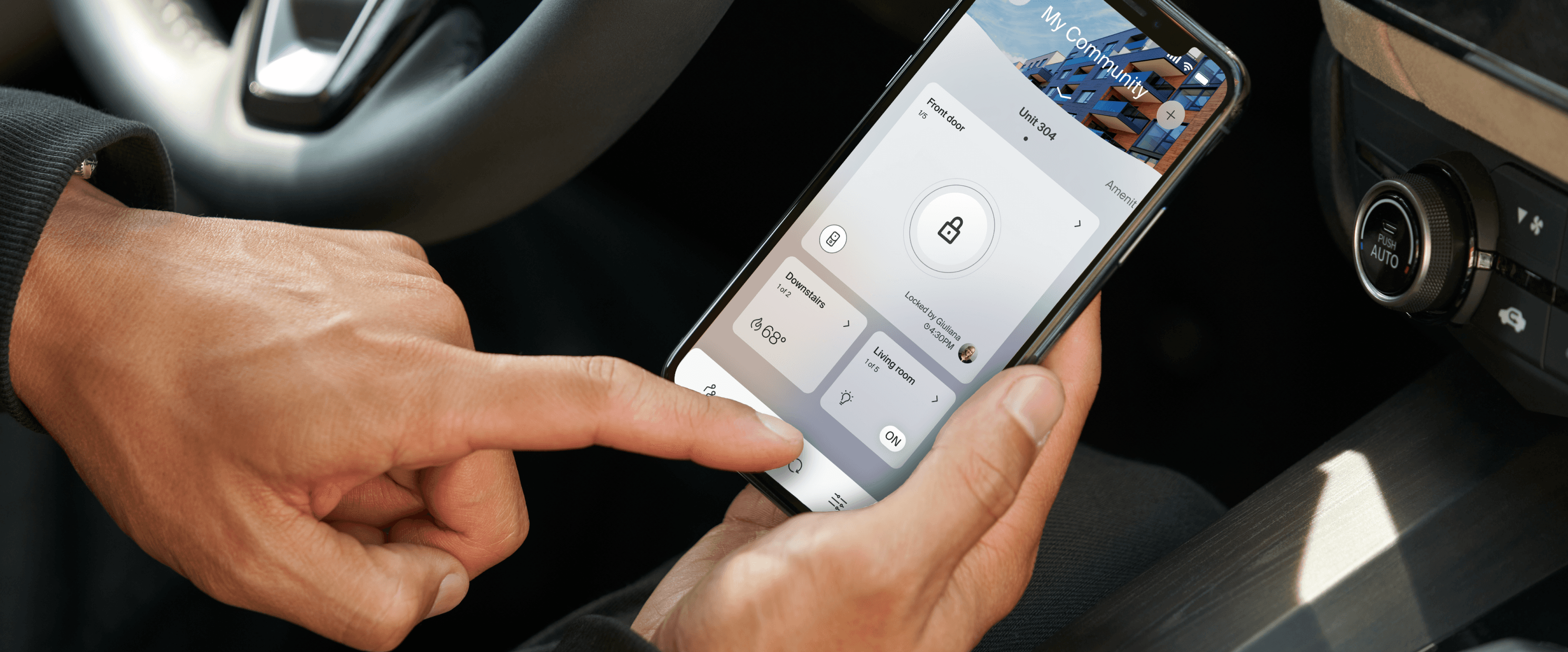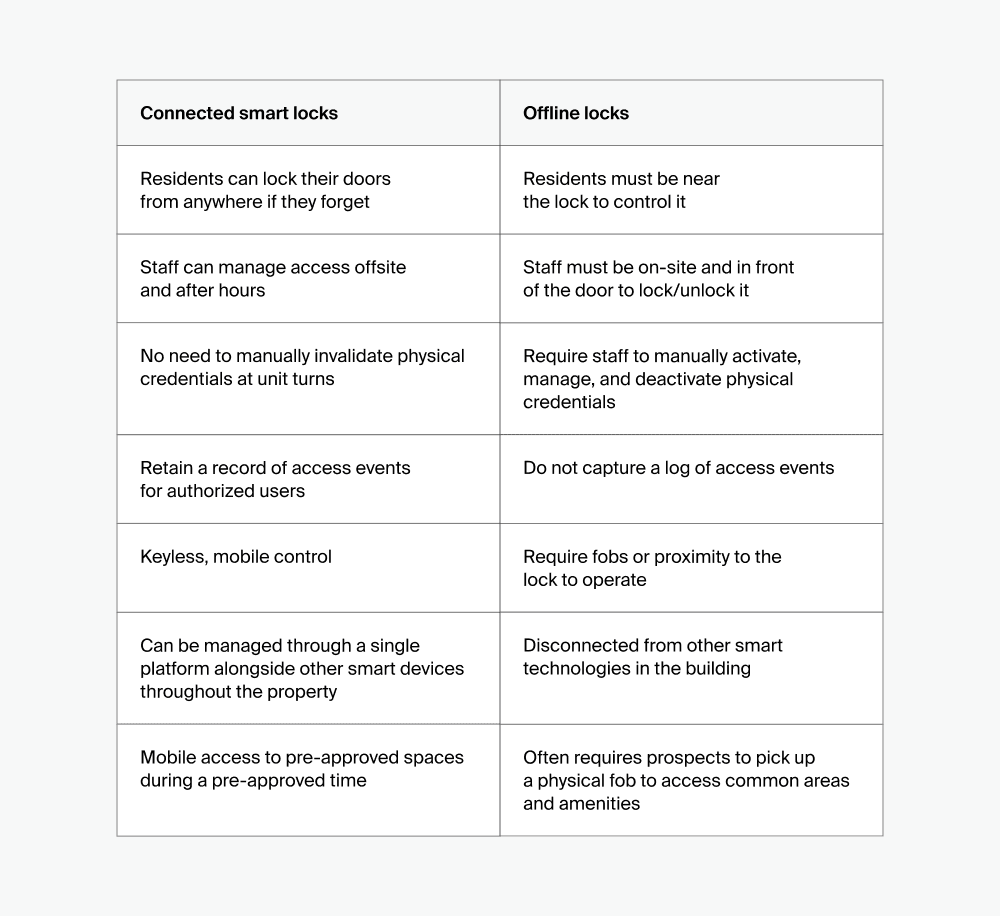October 24, 2024
Stay Competitive in Dallas-Fort Worth by Rethinking Access

Key takeaways:
- Competition in DFW is high, requiring owners and operators to battle rent declines and high vacancy rates.
- Multifamily owners in DFW can combat challenges by streamlining operations and setting their properties apart with the right smart locks.
- Offline locks fail to deliver the operational improvements and resident experience that will help maximize revenue.
Amid high competition, Dallas-Fort Worth communities need new ways to maximize revenue
In the last 10 years, no other market has added more apartments to its existing base than Dallas, according to data from RealPage.
As a result, Dallas-Fort Worth is one of the most competitive markets for retaining and attracting new tenants.
In the last 10 years, no other market has added more apartments to its existing base than Dallas.
Owners and operators in Dallas-Fort Worth are up against considerable challenges:
- Rent declines: Average rents have declined by 1.2% over the past year.
- High vacancy rates: The vacancy rate in Dallas at the end of Q3 2024 stood at 10.8%, remaining near a 20-year high.
- High resident standards: Residents have increasingly high expectations for quality amenities and experiences at apartment communities.
On top of all that, insurance, labor, and construction costs are escalating.
These challenges make it more important than ever to reduce expenses at both new construction and retrofit projects by improving operations and delivering a top-notch resident experience.
Smart locks are central to operational efficiency and resident experience
The locks you install throughout your community significantly impact day-to-day staff operations and how residents navigate the property.
These days, we’ve all heard about smart locks — they’re a relatively common amenity that promise to simplify access.
But before you place an order, carefully assess the locks you’re considering. Will they actually deliver the outcomes you’re seeking?
Not all “smart locks” are actually smart
There are two types of “smart” locks: connected locks and offline locks. But only connected locks are truly smart and able to deliver the capabilities that staff and residents expect.
Offline locks — like fob locks and Bluetooth locks — aren’t actually smart.
Here’s why:

Offline locks marketed as “smart” fail to actually streamline operations and meet residents’ expectations.
Results with offline locks vs. connected smart locks
Maintain safer communities
Reality with offline locks:
- Locks don’t provide a record of access events, so there is no evidence if an incident occurs
- Staff can’t easily check lock status on vacant units to ensure they’re securely locked
Results with connected locks:
- Access history is recorded and can be referenced any time
- Ownership avoids the average $6,500 cost of squatter eviction by keeping vacants securely locked
Operate more efficiently
Reality with offline locks:
- Managing physical keys takes average of 250 hours of staff time per year*
- Traditional locks require staff to be on site to control and manage them
- Staff waste time manually checking lock status at vacant units
- Staff have to walk the property to check lock status, which is time-consuming — especially at garden-style, wrap, and build-to-rent properties prevalent in DFW
Results with connected locks:
- Staff can remotely control access and manage access permission, saving 250 hours annually* on manual key retrieval
- Staff save 183 hours/year* walking vacant units to check lock status
*At the average 250-unit community
Stay competitive and retain residents
Reality with offline locks:
- Residents can’t remotely lock their door or easily grant access to service providers like dog walkers
- Residents can’t view access history to know who has entered the unit and when
Results with connected locks:
- Residents feel safer knowing they can confirm lock status from afar
- Residents can easily grant access to trusted service providers
Easily offer self-guided tours
Reality with offline locks:
- Prospects must pick up key(s) to access specific units and common areas/amenities
- Fobs inevitably get lost, requiring staff to waste time programming new ones
Results with connected locks:
- Prospects can use their phone to navigate the property during self-guided tours
- Improved touring experience can help fill vacancies faster
Insights from the field
Explore work and research reflecting over a decade worth of experience and leadership in the multifamily space.


























